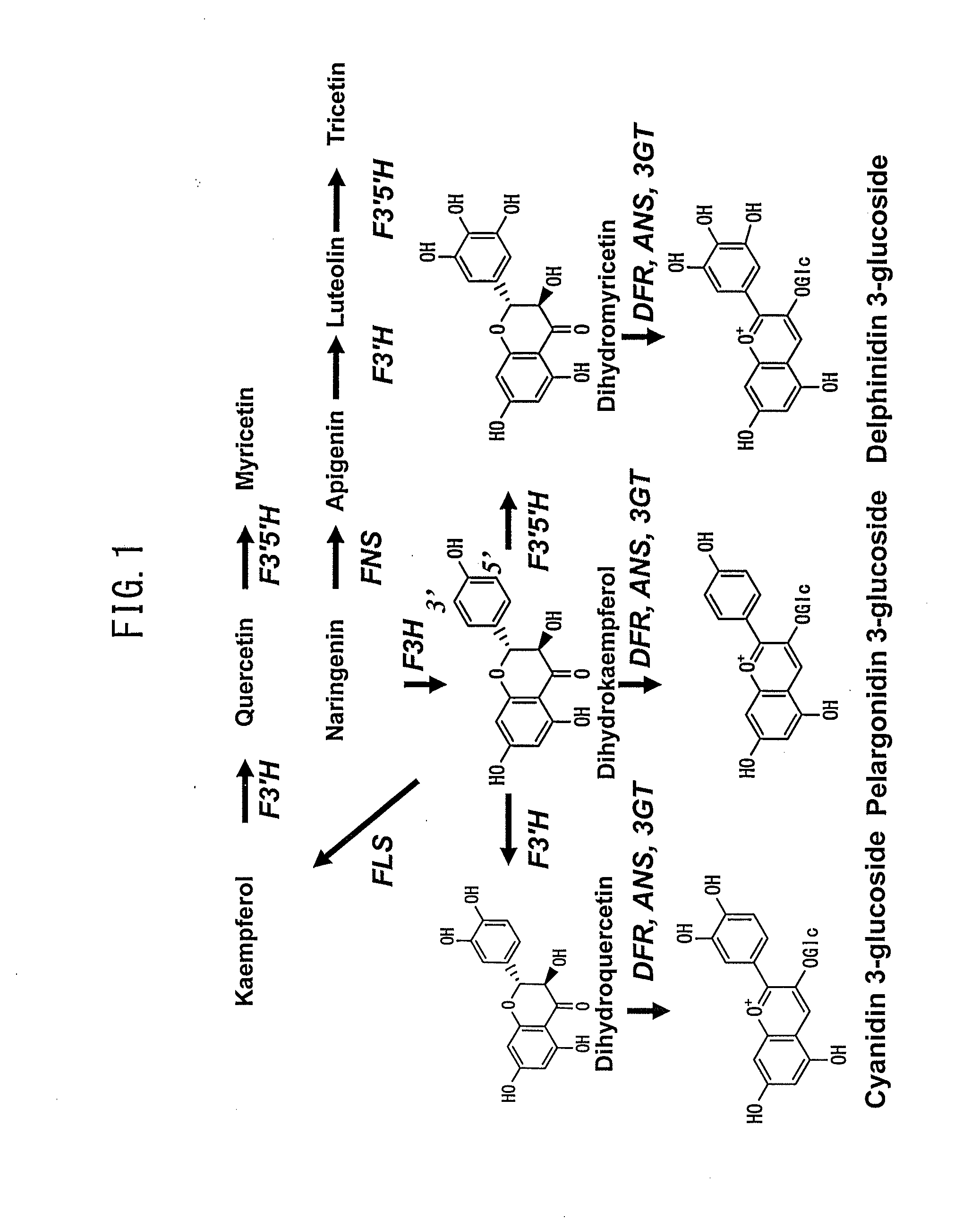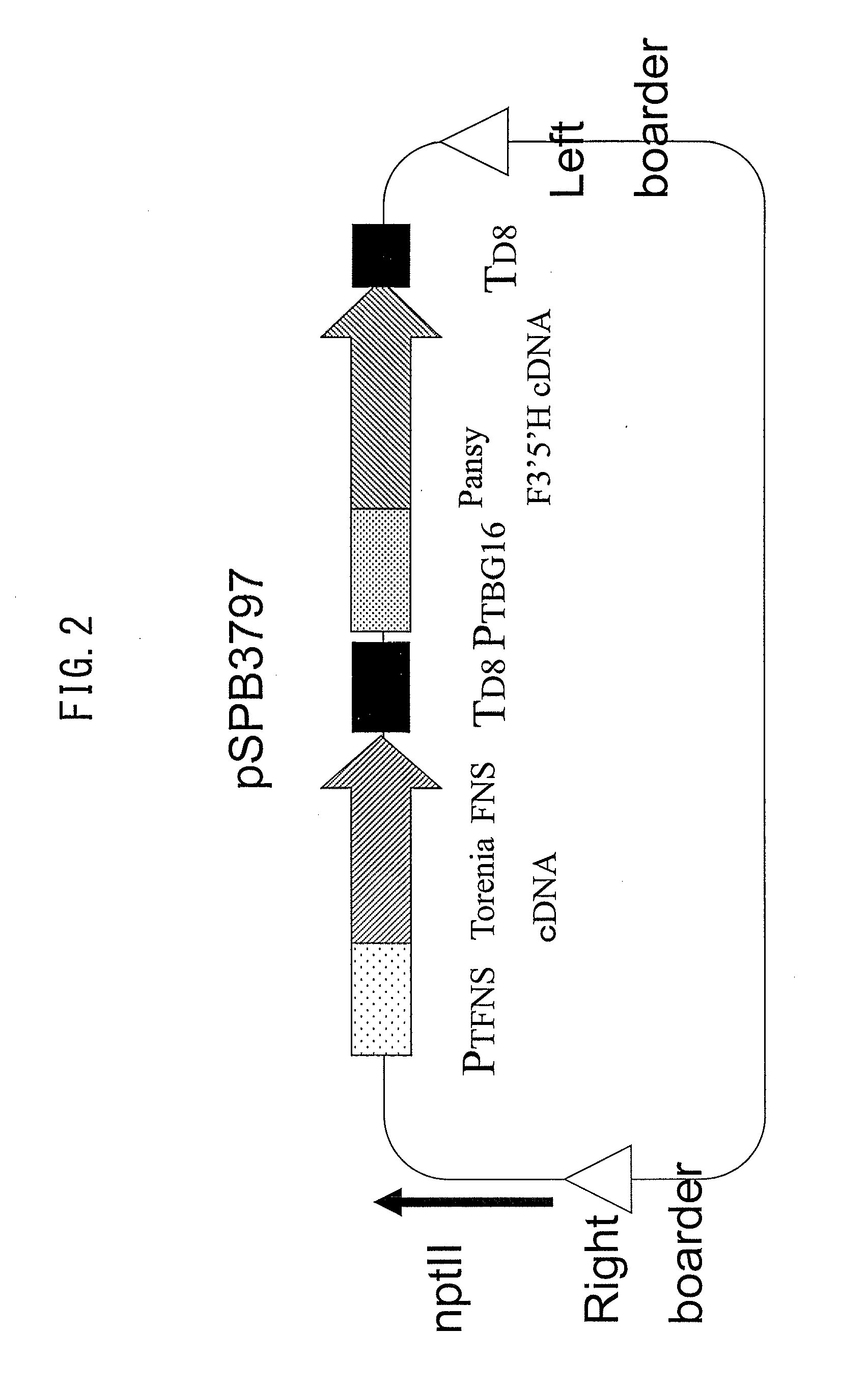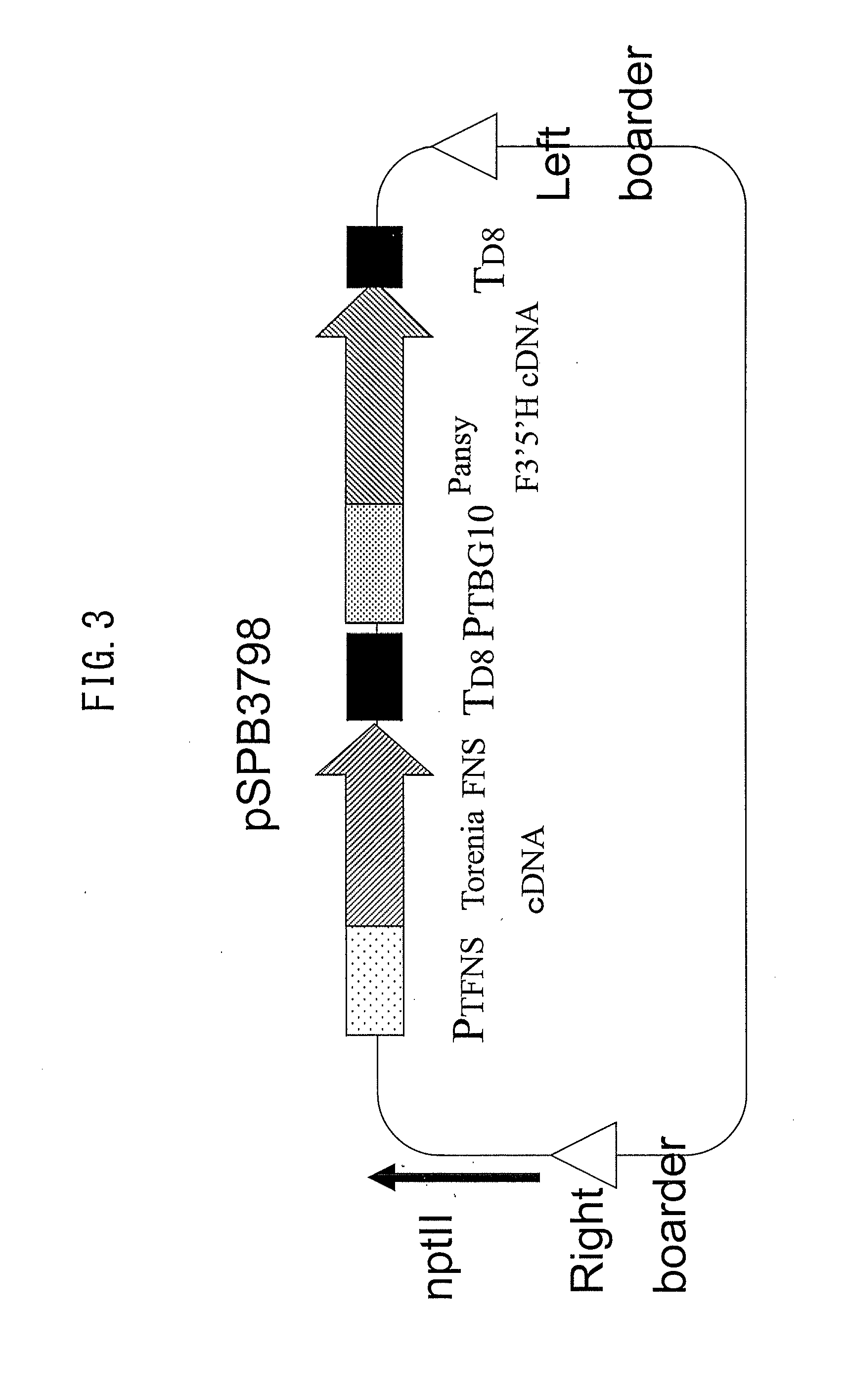Torenia-originated promoter capable of acting in petals
- Summary
- Abstract
- Description
- Claims
- Application Information
AI Technical Summary
Benefits of technology
Problems solved by technology
Method used
Image
Examples
example 1
Cloning of Transcription Control Region of Torenia F3′5′H Gene TBG10
[0078]The base sequence of torenia F3′5′H cDNA is known (Molecular Breeding 6, 239-246 (2000), Gene Bank DNA Accession No. AB012925). A chromosomal DNA library of torenia was prepared using λDASHII (Agilent Technologies, Inc.) for the vector in accordance with the method recommended by the manufacturer. Torenia chromosomal DNA was prepared from the leaves of the torenia variety Summer Wave Blue (Suntory Flowers Ltd.). The resulting torenia chromosomal DNA library was screened using labeled torenia F3′5′H cDNA and the plaque of a phage that hybridized with torenia F3′5′H cDNA was recovered. Using this phage as a template, PCR was carried out using two types of oligonucleotides (T3pro: 5′-AATTAACCCTCACTAAAGGG-3′ (SEQ ID NO: 1), T7pro: 5′-TAATACGACTCACTATAGGG-3′ (SEQ ID NO: 2)) as primers to amplify a DNA fragment containing the sequence derived from torenia chromosomal DNA. Using this DNA as a template, PCR was carrie...
example 2
Cloning of Transcription Control Region of Torenia F3′5′H Gene TBG16
[0080]Plaque of the phage that hybridized with torenia F3′5′H cDNA obtained in Example 1 was allowed to proliferate to obtain phage DNA. Using this as a template, PCR was carried out using one set of oligonucleotides (T3pro, THF2RV) or one set of oligonucleotides (T7pro, THF2RV) as primers. An approximately 2.3 kb DNA fragment obtained from the (T3pro, THF2RV)-derived PCR product was cloned in pCR2.1 TOPO to obtain plasmid pSPB3746. The sequence thereof is shown in SEQ ID NO: 9. Using this plasmid as a template, PCR was carried out using a set of oligonucleotides (TBG16proFW: 5′-TCCTATTGCACTCGTTTTTTC-3′ (SEQ ID NO: 10), TBG16proRV: 5′-ACTGAATGGTGACTAGCCGĈ3′ (SEQ ID NO: 11)) as primers. The resulting DNA fragment was cloned in BluntII-TOPO (Invitrogen Corp.) to obtain plasmid pSPB3758. The DNA sequence contained in this plasmid is shown in SEQ ID NO: 12. Moreover, using pSPB3758 as a template, PCR was carried out us...
example 3
Cloning of Transcription Control Region of Torenia FNS Gene
[0081]The torenia chromosomal DNA library obtained in Example 1 was screened using labeled torenia FNS cDNA, and plaque of a phage hybridized with torenia FNS cDNA was recovered. The phage plaque was allowed to proliferate to prepare phage DNA. Using this DNA as a template, PCR was carried out using one set of oligonucleotides (T3pro, TFNSR3: 5′-ATTCCTAATGGGCTGAAAGTG-3′ (SEQ ID NO: 14)) or one set of oligonucleotides (T7pro, TFNSR3) as primers. An approximately 4.2 kb DNA fragment (SEQ ID NO: 15) able to be amplified by PCR using T7pro and TFNSR3 was cloned in pCR2.1 TOPO. The resulting plasmid was designated as pSPB3747.
[0082]Using the aforementioned phage DNA as a template, PCR was carried out using one set of oligonucleotides (TFNS1proFW: 5′-CAAATGAAACCCCATCAGTGTC-3′ (SEQ ID NO: 16), TFNS1proRV: 5′-GCTTTATATATATTTTTTTAGCGC-3′ (SEQ ID NO: 17)) as primers. The amplified DNA fragment was cloned in BluntII-TOPO to obtain plas...
PUM
| Property | Measurement | Unit |
|---|---|---|
| Fraction | aaaaa | aaaaa |
Abstract
Description
Claims
Application Information
 Login to View More
Login to View More - R&D Engineer
- R&D Manager
- IP Professional
- Industry Leading Data Capabilities
- Powerful AI technology
- Patent DNA Extraction
Browse by: Latest US Patents, China's latest patents, Technical Efficacy Thesaurus, Application Domain, Technology Topic, Popular Technical Reports.
© 2024 PatSnap. All rights reserved.Legal|Privacy policy|Modern Slavery Act Transparency Statement|Sitemap|About US| Contact US: help@patsnap.com










